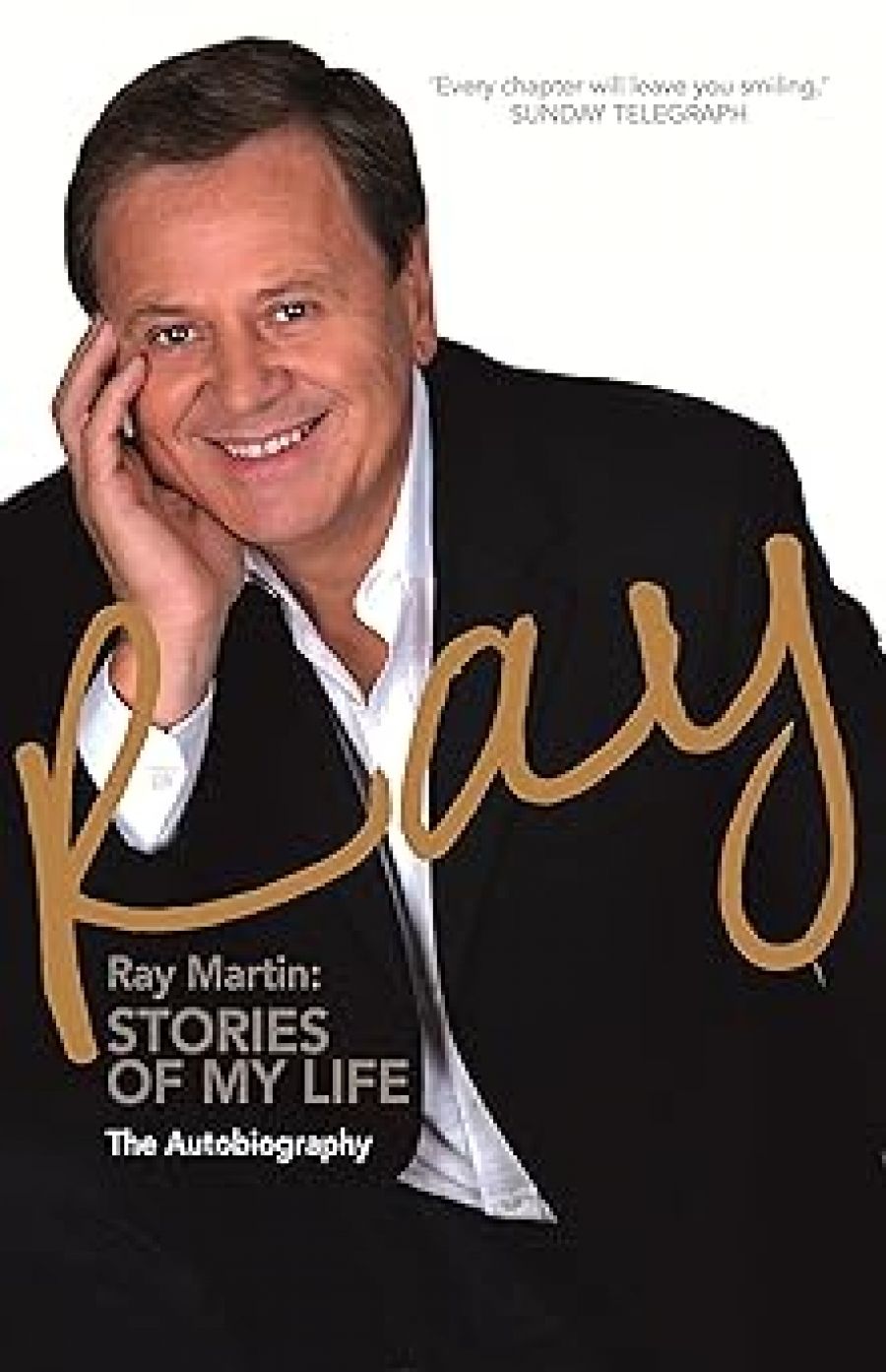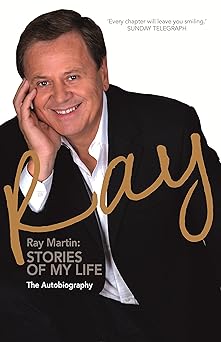
- Free Article: No
- Contents Category: Biography
- Review Article: Yes
- Article Title: Pot-pourri of life
- Article Subtitle: Memoirs of the face of Channel 9
- Online Only: No
- Custom Highlight Text:
Beginning as a voice on ABC radio, Ray Martin became a face familiar to most Australians. He reported from the United States for Four Corners in the 1960s and 1970s, was one of the original reporters on 60 Minutes from 1978, presented the Midday show from 1984 to 1993, and twice hosted A Current Affair (ACA). As he notes, he was the face of Channel 9 in the 1990s, also hosting Carols by Candlelight, election debates and assorted specials. But just in case anyone is in any doubt as to whom this book is about, Heinemann has plastered the cover with Ray: Stories of My Life: The Autobiography. Martin’s signature is added for good measure.
- Book 1 Title: Ray: Stories of My Life
- Book 1 Subtitle: The Autobiography
- Book 1 Biblio: William Heinemann Australia, $49.95 hb, 472 pp
- Book 1 Cover Small (400 x 600):

There are personal stories and professional stories. Martin’s childhood was a traumatic one, as his ne’er-do-well father, seeking work, dragged him, his older sisters and their mother around the country. Finally, George Grace’s drinking and violence became too much and Mary fled with the children, changing their surname to ‘Martin’. In the harrowing early chapters, glimpses of Martin’s conviction that he has had ‘a fortunate life’ still peek through. As the face of Channel 9 – and, arguably, Australian television in the 1980s and 1990s – Martin appeared congenial and sensitive, thoughtful and humorous. Boyishly handsome, he was generally regarded as a decent bloke. He was infinitely versatile, reporting from war zones, paying homage to Don Bradman and charming Audrey Hepburn. Martin also seemed quintessentially Australian, and scattered throughout his autobiography are colloquialisms and Australianisms such as ‘fast’n’loose’, ‘onya’ and ‘cobber’.
Ray presents a picture of the Australian media landscape over the last forty years: the ABC’s departments of talks and sport, and its North American bureau; the golden age of commercial television current affairs; the decline of live variety shows; and the tabloidisation of ACA (and Today Tonight). After nearly a decade in show business as the host of Midday, Martin thought he was returning to a career in news and current affairs in 1994 when he agreed to host ACA. The eternal optimist ignored the warnings of the program’s founder, Mike Willesee, and genuinely believed that he could help avert the program’s move towards ‘consumer crap’. His nuanced treatment of his time at ACA, his responses to critics of the show, his discussion of the impact of the move to daily ratings meters and his condemnation of cheque-book journalism form some of the most interesting passages of the book, and culminate in a string of ethical questions posed on page 372. It is intriguing, too, to read Martin’s reflections on his involvement with the Council for Aboriginal Reconciliation.
This autobiography adds to a stable of books about Channel 9, including Gerald Stone’s Compulsive Viewing: The Inside Story of Packer’s Nine Network (2001) and Who Killed Channel Nine? (2007), and Paul Barry’s Who Wants to be a Billionaire? The James Packer Story (2009), and intersects with other recent tomes, such as Harry M. Miller: Confessions of a Not-so-Secret Agent and Roger Rogerson’s The Dark Side, not to mention the fictional Boned, by ‘Anonymous’ (2008). The author of the infamous jibe about ‘carpet strollers’ at Channel 9, Martin displays a lifelong disdain for management: he opted to go on the road for 60 Minutes rather than join the ABC’s ‘executive row’, and came to believe that ‘the further you stepped away from the management floor, the more you could trust the word of whomever you happened to be talking to’. Perhaps not surprisingly, there is little malice in this autobiography, although Martin does reserve some harsh words for Media Watch and the three Johns – Safran, Alexander and Westacott.
But in considering the ‘pot-pourri of my life’, Martin doesn’t really create much of a sense of an inner life. He describes himself as ‘a young bloke from working-class Aussie suburbia with barely a book in the house’, and writes of his English teacher exposing him to Conrad and Shakespeare. There is little sense of what Martin read at university and beyond; the American New Journalism of Hunter S. Thompson, Gore Vidal and Pete Hamill was clearly influential, but what of books or art or matters spiritual? Intent on becoming an English and history teacher, Martin was the first of his family to attend university. Then he secured a trainee position with the ABC in 1965, freeing him from the need to teach history and instead allowing him to ‘get out there and see history being made’. His only other option, he concluded, might have been to become ‘a Sydney Uni lecturer, driving a Citroën and living in Glebe’; later, he dismisses critics of ACA as academics who ‘were either unemployable ex-journos or old lefties who’d never even covered a car crash’.
Martin credits his itinerant childhood with inspiring a lust for ‘journeying’ and moving around telling stories, and an appreciation of the stable home life provided by his wife of forty years and their two children. But he comes across as such a straightforward package that the autobiography is almost too affable, even anodyne. Martin’s pen portraits of the likes of Paul Keating, Nicole Kidman and Sam Chisholm are quite effective, but an inability to probe the human psyche is apparent in his cursory remarks about Jana Wendt, his complex and enigmatic colleague.
This book is attractively produced, with endpapers showing Martin with famous faces, and some forty pages of colour plates; regrettably, many of them aren’t dated. There is a very occasional error, as when Julie Flynn is described as running ‘Australian commercial radio’, instead of Free TV Australia.
Ray is not just about the decline of the pioneering and iconic Channel 9, but about ‘[w]hen television really mattered’ to Australian audiences: ‘It doesn’t anymore,’ Martin laments, alluding to the digital revolution.


Comments powered by CComment